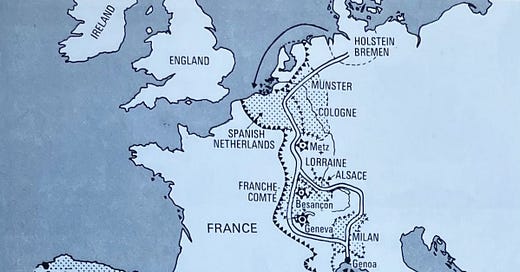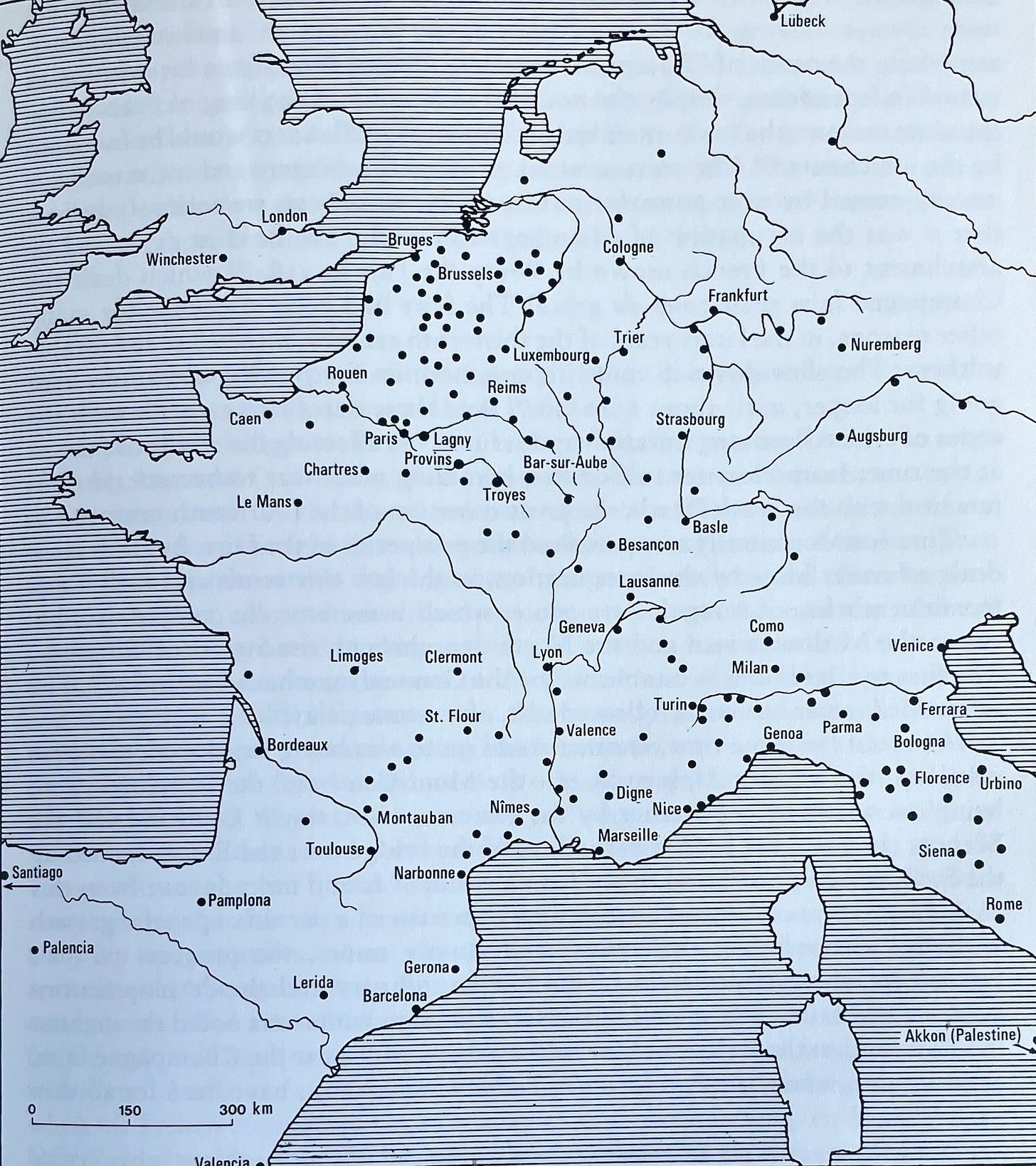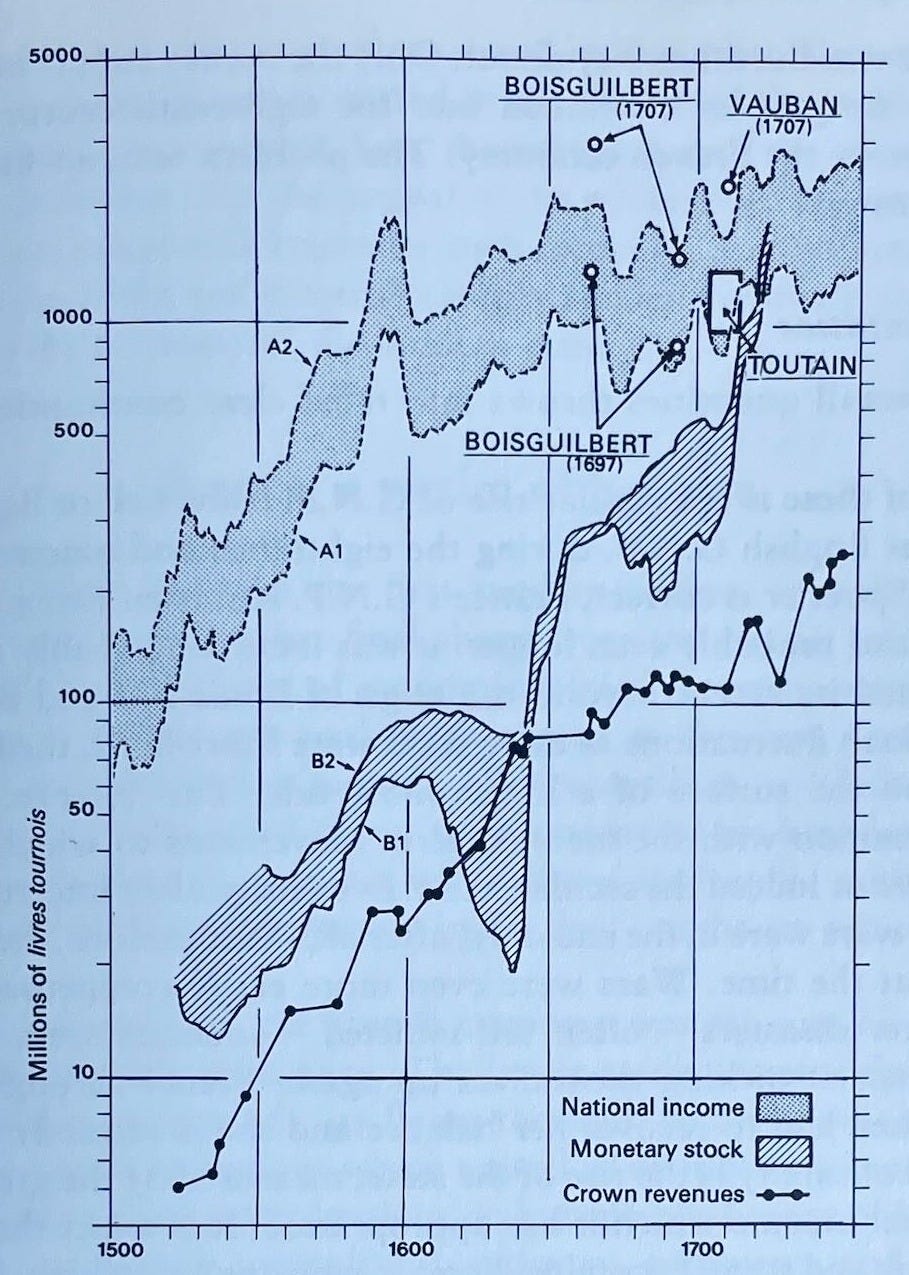Going forward, these supplementals will be paywalled. This first one, however, I’ll leave free to read so you can take a look to see if it piques your interest. Any feedback welcome!
Like all the volumes of Civilisation & Capitalism, The Perspective of the World is filled with brilliant maps and charts about all manner of things. This is just a few of my favourites — I hope they give an impression of the sheer breadth of Braudel’s undertaking, including stuff I did not touch on in my review.
The Logistics of the Spanish War Against the United Provinces
This is a fairly basic map, really, but I thought it illustrates well the scale of the organisational and logistical challenge faced by the Spanish Hapsburgs in their long war against the United Provinces. Notice the importance of Genoa: it was not for nothing that the city became the key middleman in financing the war Spanish effort, strategically located as the port which connected Spain, Naples, and Northern Italy.
Towns in Contact with the Champagne Fairs (12th-13th Century)
In my review, I skipped over Braudel’s discussion of the pre-Venetian ‘world-economy’ of Europe, for brevity’s sake more than anything. However, this is not because the Champagne fairs — the financial centre of Europe, Braudel argues, before Florence and Venice — are not exciting! This map shows just how wide the Champagne fair network was in the late medieval period.
National Income, Money Stocks, and Royal Revenues in France, 1500-1750.
The only time-series I wanted to show here, for two reasons. Firstly, I love pre-digital era time-series plots: I think they look great, much more visually pleasing than thin blue STATA lines. Secondly, this chart illustrates well the dramatic expansion of the money supply in the seventeenth century, a story which, while I did not look at it in my review, is significant to Braudel. Note that I have not checked how well the underlying data holds up today.
Number and Origin of Ships Entering the Bay of Cadiz in 1784
Lastly, another map! This one Braudel titles ‘Europe hastens to exploit Spanish America’, and it is designed to show the trans-European character of engagement with Latin America in the late eighteen century, long after the heyday of the Spanish Empire. I think it reveals the ‘northern shift’ of the European world economy well — Sweden and Denmark have a much greater engagement than the once-illustrious Genoa, Florence, and Venice. However, take it with a grain of salt: there is no adjustment for tonnage, and I am not sure one can assume that tonnage is i.i.d between nations.
If you enjoyed this, consider a paid subscription to receive the supplementals to all future reviews! Please shoot me a message if you have feedback or think this is an awful idea..








